Archive for March, 2013
The three-minute redemption
28 March 2013 | Fiction, Prose
Artist and writer Hannu Väisänen’s alter ego, Antero – who has appeared in Väisänen’s earlier autobiographical novels – is a young artist in his new novel Taivaanvartijat (‘The guardians of heaven’, Otava, 2013). Antero is invited to create the altarpiece for a new church. He rejects conventional, ecclesiastical ‘Sunday art’ and uses simple and versatile everyday symbols; his design contains an ordinary Finnish door key, familiar to everybody. The clergymen and laywomen are appalled: is this art, is it appropriate? In this extract the frustrated Antero takes a therapeutic break – on a roller-coaster
Now I need to get another beat into my head. What can help me forget those morose, curled up creatures, their strange commands and scents? I remember the roller-coaster. And I remember the ancient lore that it’s good to ride the roller-coaster with a lover before you attempt anything else. I go home quickly, throw down my sketch-book and my unnecessarily businesslike briefcase, exchange my suit, which was supposed to indicate devotion, for a windcheater, arrange my hair more carelessly, get on my bike and cycle to the funfair where I know the roller-coaster, the genuine, real, old-fashioned, clanking roller-coaster, to be.
Who could have been the first person to imagine the delights of the roller-coaster? Into whose happy capacity for daydreaming did it fall? Who saw those massive iron tentacles in their figure-eight shapes, those stretched and knotted rings of eternal joy? Who understood that on such a ride shame and anxiety would fall out of one’s pockets? It’s claimed that the first roller-coaster was invented by Catherine the Great. The monarch, with her multifarious patronage of culture, commissioned in Oranienbaum, St Petersburg, the first Montagne Russe amid the amusements of the wise: a Russian mountain with its ice-paths, raised into the air, which melted with the coming of spring. Who else could understand this organ-stirring amusement as deeply as the Great Wife with her hundreds of lovers. In the grip of mortal fear, I too always pray: before I am laid in earth, before the crematorium’s oven, take me once more to the roller-coaster. More…
What Finland read in February
28 March 2013 | In the news
Artist and painter Hannu Väisänen (born 1951) began writing an autobiographical series of novels in 2004. Born in the northern town of Oulu, he colourfully described his somewhat bleak childhood in a family of five children headed by a widowed soldier father. His fourth novel, Taivaanvartijat (‘The guardians of heaven’, Otava), is number one on the February list of best-selling Finnish fiction titles compiled by the Finnish Booksellers’ Association.
Number two is former number one, the Finlandia Prize -winning novel Is (‘Ice’, in Finnish Jää; also to be published in English, possibly later this year) by Ulla-Lena Lundberg.
The latest comic book by Pertti Jarla about the inhabitants of Fingerpori (‘Fingerborg’, Arktinen Banaani), Fingerpori 6, was number three.
In first and second place on the translated fiction list were Stephen King – (11/22/63) and J.R.R. Tolkien (The Hobbit or There and Back Again).
At the top of the non-fiction list is, for the second time, Kaiken käsikirja (‘Handbook of everything’, Ursa) by astronomer and popular writer Esko Valtaoja. In these hard times Finns seems also to be interested in economics, so number two was Talous ja utopia (‘Economics and utopia’, Docendo) by Sixten Korkman, professor and specialist in international and national economics.
On the road, in the world
21 March 2013 | Reviews
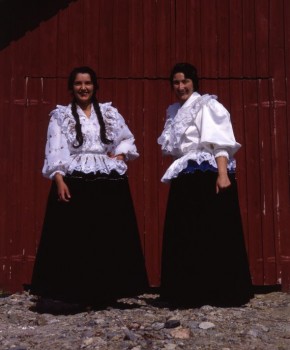
In Romani dress: Finnish Romani women still wear their traditional velvet skirts (which weigh 5-8 kilos). Photo: Topi Ikäläinen, 1983
Suomen romanien historia
[A history of Finland’s Romani people]
Toimittanut [Edited by] Panu Pulma
Helsinki: Suomalaisen Kirjallisuuden Seura (the Finnish Literature Society), 494 p., ill.
ISBN 978-952-222-364-7
€57, hardback
The Romani people set out from India around a thousand years ago; there are those who even claim that they originated in Egypt long before that. This latter account was favoured among the Romani in Europe, and so their leaders took to styling themselves the Dukes of ‘Egypt Minor’ or ‘Little Egypt’.
The Romani of Europe are generally considered to have come from northern India in the 15th century. They arrived in Finland – which at that time was part of Sweden – in 1512.
Five hundred years later, it seems a fitting time to publish Suomen romanien historia, a volume edited by Panu Pulma, PhD, a university lecturer in Finnish and Nordic history, with chapters contributed by a total of 14 additional experts.
The Romani who reached Stockholm, also in 1512, were said to be from ‘Egypt Minor’. This purported connection with Egypt is the origin behind the English word gypsy. The Swedish word zigenare (related to the German Zigeuner) did not come into use until the 17th century. More…
Gypsy life
21 March 2013 | Extracts, Non-fiction
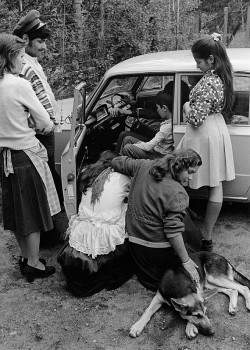
Romani teenagers, Kouvola, 1976. Photo: Mikko Savolainen
Photographer Mikko Savolainen began taking photos of Finnish Romani life in the 1960s, in the time of transition from nomadism to life in housing estates. New trends in the 1960s and 1970s also brought Romani culture to the fore – singers, musicians, festivals; an act baning racial discrimination had been passed. Savolainen became interested in Gypsy life
The text and the photographs are from Suomen romanit. Romanielämää 1960–1970-luvuilla / The Roma of Finland. Roma life in the 1960s and 1970s (Musta Taide, 2008. English translation: Jüri Kokkonen)
I have visited over a hundred Roma homes. Respect for parents, care of the elderly and hospitality are the first things that come to mind.
I have come across similar consideration for visitors only in cottages in Karelia, where the first question was whether I wanted a cup of coffee or to eat first.
I took my first photographs of Roma people in the Market Square of Hamina as an amateur photographer who only wanted to take good portraits. More…
Johanna Holmström: Asfältsänglar [Asphalt angels]
21 March 2013 | Mini reviews, Reviews
 Asfältsänglar
Asfältsänglar
[Asphalt angels]
Helsinki: Schildts & Söderströms, 2012. 294p.
ISBN 978-951-52-3120-8
€29.90, hardback
Finnish translation:
Itämaa
Helsinki: Otava, 2012. 333 p.
Suom. [Translated by] Tuula Kojo
ISBN 978-951-1-26841-3
€29.90, hardback
The immigrant novel has not played a significant role in contemporary Finnish literature; since the wave of Russian refugees in the early 19th century, there have been few immigrants to Finland. In her short story collection Camera Obscura (2009) Johanna Holmström (born 1981) managed to combine realism and fantasy in a fascinating way; her new novel, Asfaltsänglar, is the directly yet eloquently told story of two young immigrant sisters. Leila, bullied at school, is becoming a drop-out, while Samira, who has tried to live according to western norms, lies unconscious after an unexplained accident. Their Finnish mother is a fanatical convert to Islam and their father comes from the Maghreb region. The novel confronts claustrophobic Arabic family culture and western ideals of freedom, taken so far that people completely lose any sense of responsibility for one another, with the adults’ betrayal of their children playing a key role. Holmström goes to great lengths to give a balanced portrayal of both cultures and show why her characters act as they do, even when the results are tragic.
Translated by Claire Dickenson
Not a day without pen and paper
14 March 2013 | This 'n' that
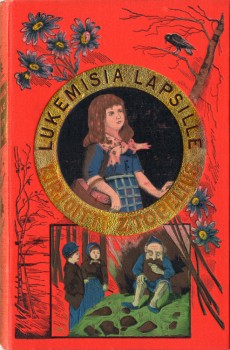
For use and fun: stories for children by Z. Topelius
Zacharias Topelius wrote every day for almost 70 years. His published works contain almost 16,000 pages.
As he was also the editor of the Swedish-language newspaper Helsingfors Tidningar which he published twice a week for 20 years, his output, counted in pages, is enormous.
Author, journalist, historian, critic and pedagogue Topelius (1818–1898) wrote poetry, hymns, travelogues, serials, articles, short stories, fairy tales, textbooks and plays.
As for Finnish translations, his historical serial Fältskärns berättelser (‘The barber-surgeon’s tales’, 1853–1867) and Läsning för barn (‘Reading for children’) are probably his most popular works.
In a bilingual (Swedish and Finnish), text-critical, annotated (and illustrated) project, entitled ‘Zacharias Topelius Skrifter’ (‘Z. T. writings’), Svenska Litteratursällskapet i Finland (the Society of Swedish Literature in Finland) will publish a large number of Topelius’s works in digital facsimile form. The selection grows continually.
The human factor
14 March 2013 | Non-fiction, Tales of a journalist

Illustration: Joonas väänänen
Columnist Jyrki Lehtola zooms in on the worst factor in the diminishing quality journalism: us. Our voice is now dominant in the media, and it isn’t a particularly pleasant one.
Have you heard the rumours about the crisis in the media yet? Or their search for a new revenue logic that consists of repeating the words ‘Internet’ and ‘money’? I’m sure you have, even though the media itself claims to be getting along fairly well and can always find some perspective on its dropping circulation numbers that tells everyone they’re doing just fine. (For example, their numbers are better than in 1898 when the paper didn’t exist. Yes, we rule!)
But that isn’t the only problem. The other problem exists in us, the readers, listeners and viewers. Social media, discussion boards, and the media itself have given us a voice, and, er, well, it isn’t the kind of voice anyone wants to hear.
It turned out we have an ugly voice, and we want all the wrong things. More…
Maailman paras maa [The best country in the world]
14 March 2013 | Mini reviews, Reviews
 Maailman paras maa
Maailman paras maa
[The best country in the world]
Toim. [Ed. by] Anu Koivunen
Helsinki: Suomalaisen Kirjallisuuden Seura, 2012. 255 p., ill.
ISBN 978-952-222-347-0
€ 37, paperback
In this book twelve writers, representing various fields of research, ponder Finland and Finnishness from the viewpoint of history, ethnology, society, culture and economics. Finland-Swedishness and the relationship between Finns and Russians, the need of Finns to defend their participation in the Second World War in alliance with Germany as a ‘separate war’, and the nostalgia related to lost Karelia. The articles deal with Finland facing economic challenges, attitudes towards foreign beggars and self-critical Finnish opinion pieces. They also take a look at Finnish man as portrayed in the classic novel Seitsemän veljestä (‘The seven brothers’, 1870, by Aleksis Kivi) and in a recent prize-winning film about men talking in the sauna about their feelings, and discuss the relationship of the two national languages, Finnish and Swedish. Well-written and original articles question truisms and challenge the reader contemplate his or her own relationship with Finnishness.
In memoriam Kai Laitinen 1924–2013
14 March 2013 | In the news
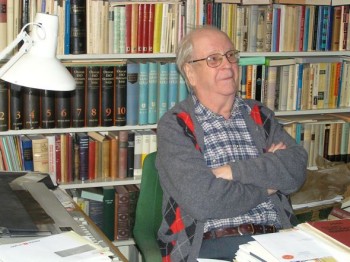
Kai Laitinen. Photo: Ilkka Välimäki (the literature archive/Finnish Literature Society, 2006)
The journalist, critic, author and professor Kai Laitinen died on 11 March in Helsinki, aged 88.
He began his literary career as a critic in the daily paper Helsingin Sanomat in 1950. As the Editor-in-Chief of the new literary journal Parnasso he was able to promote the new trends in modernist fiction and poetry which began to flourish in post-war Finland.
Laitinen’s academic career at Helsinki University involved serving as Associate Professor and Professor of Finnish literature (1975–1989). From the 1950s onwards he was actively involved in the work of dozens of literary societies, publications and organisations, both in Finland and abroad.
Among his publications are two collections of essays, a book of memoirs and two popular books on history of literature: Suomen kirjallisuus 1917–1967 (‘Finnish literature 1917–1967’) and a more concise work, Suomen kirjallisuuden historia (1981‚ Literature of Finland in Brief), which has been published in eleven languages.
Kai Laitinen was appointed Editor-in-Chief of Books from Finland in 1976 when the little magazine, then in its tenth year, began to take the form of a proper literary journal and to be published by Helsinki University Library. He held the job until 1989.
In issue 4/1977 of Books from Finland, on the theme of the 60th anniversary of Finland’s independence and the changing role of literature, Kai wrote in the editorial: ‘Literature is, and must be, much more than a chronicle of national and social history, or the mere accumulation of changing styles and genres. So often it is an author’s critical insight or his struggle against prevailing literary norms that gives birth to the works of the greatrest artistic importance. One of the main tasks of literature, both on a national and a human level, can be summed up succinctly in two lines from T.S. Eliot’s Little Gidding – “To purify the dialect of the tribe / And urge the mind to aftersight and foresight.” This comes close to describing what Finnish literature has achieved over the past sixty years.’
T.S. Eliot was the poet who perhaps had a permanent place in Kai’s personal literary cosmos – he introduced Eliot’s poetry to Finnish readership in the late 1940s. This passage, from Little Gidding, might well serve as his epitaph.
….We shall not cease from exploration
And the end of all our exploring
Will be to arrive where we started
And know the place for the first time.
Inspired by winter
13 March 2013 | This 'n' that
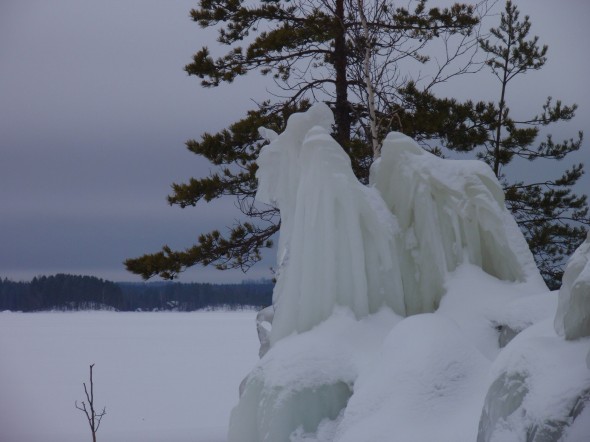
Made by nature: ice sculptures on Lake Saimaa. Photo: Soila Lehtonen
Jo kirkkahana aaltoo avaruus,
jo päivyt paistavi, jo hohtaa hanki,
vaan kaikkialla viel’ on hiljaisuus
ja taivas valju on ja maa on vanki.
Now bright swells in the heavens abound,
the days are sunny, snowdrifts gleam,
and yet silence still dwells all around,
the sky is pallid, a prisoner yet the soil.
We were so impressed by this astonishing ice sculpture, created by the artist Winter, that we wanted to share it with you – before, as the spring equinox has just been reached, it disappears for ever.
These hooded characters were created by the storm that sent waves up the trees growing on the waterfront of an islet, just before the lake Saimaa froze up late last year. They have been standing there for months, observed – and photographed – by hundreds of surprised skaters who pass them by on the 22-kilometre skating route.
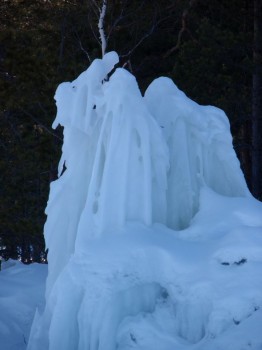
Bye-bye now…. Photo: Soila Lehtonen
Earlier these almost Biblical-looking figures seemed to be heading for south (the big photo), but as the changing temperatures and the March sun has now made their own adaptations in the marble-looking ice, the group now seems to be waving goodbye – until next winter, then?
The stanza is from the poem Maaliskuulla (‘In March‘, from the collection Maaliskuun lauluja, ‘Songs of March’, 1896) by Eino Leino (translation by yours truly).
Me and my shadow
Hotel Sapiens is a place where people are made to take refuge from the world that no longer is habitable to them; the world economy has fallen – like the House of Usher, in Edgar Allan Poe’s story – and with it, most of what is called a civilised society. A rapid synthetic evolution has taken humankind by surprise, and the world is now governed by inhuman entities called the Guardians. ‘Kuin astuisitte aurinkoon’ (‘As if stepping into the sun’) is a chapter from the novel Hotel Sapiens ja muita irrationaalisia kertomuksia (‘Hotel Sapiens and other irrational tales’, Teos, 2012), where several narrators tell their stories
The fog banks have dissipated; the sky is empty. I cannot see the sails or swells in its heights, nor the golden cathedrals or teetering towers. I would not have believed I could miss a fog bank, but that’s exactly what it’s like: its disappearance is making me uneasy. For all its flimsiness and perforations it was our protection, our shield against the sun’s fire and the stars’ stings. Now the relentlessly blazing sun has awakened colours and extracted shadows from their hiding places. The moist warmth has dried into heat and the Flower Seller’s herb spirals have dried up into skeletons. The leaves on the trees are full of bronze, sickly red and black spots. Though there is no wind and autumn is not yet here, they come loose as if of their own volition, as if they wanted to die.
This morning, as I was strolling up and down the park path as usual, I saw another shadow alongside my own.
– Ah, you’re back! I said. – I wondered what had happened to you after you lost your shadow; how did you manage to change into your own shadow yourself? More…
New member of the Books from Finland team
7 March 2013 | In the news
Kristina Malmio is the new member of the Editorial Board of Books from Finland. She replaces Jarmo Papinniemi, who died last October. Kristina is a literary scholar and associate professor at Helsinki University as well as a critic who writes in both Swedish and Finnish. Her doctoral thesis (Department of Nordic Literature, University of Helsinki, 2005) examined metafictive features in Finnish and Finland-Swedish popular literature in the 1910s and 1920s. She has been a member of the Nordic Council literary prize jury since 2006.
Kristina is particularly fond of new Finnish poetry, good coffee and astanga yoga.
